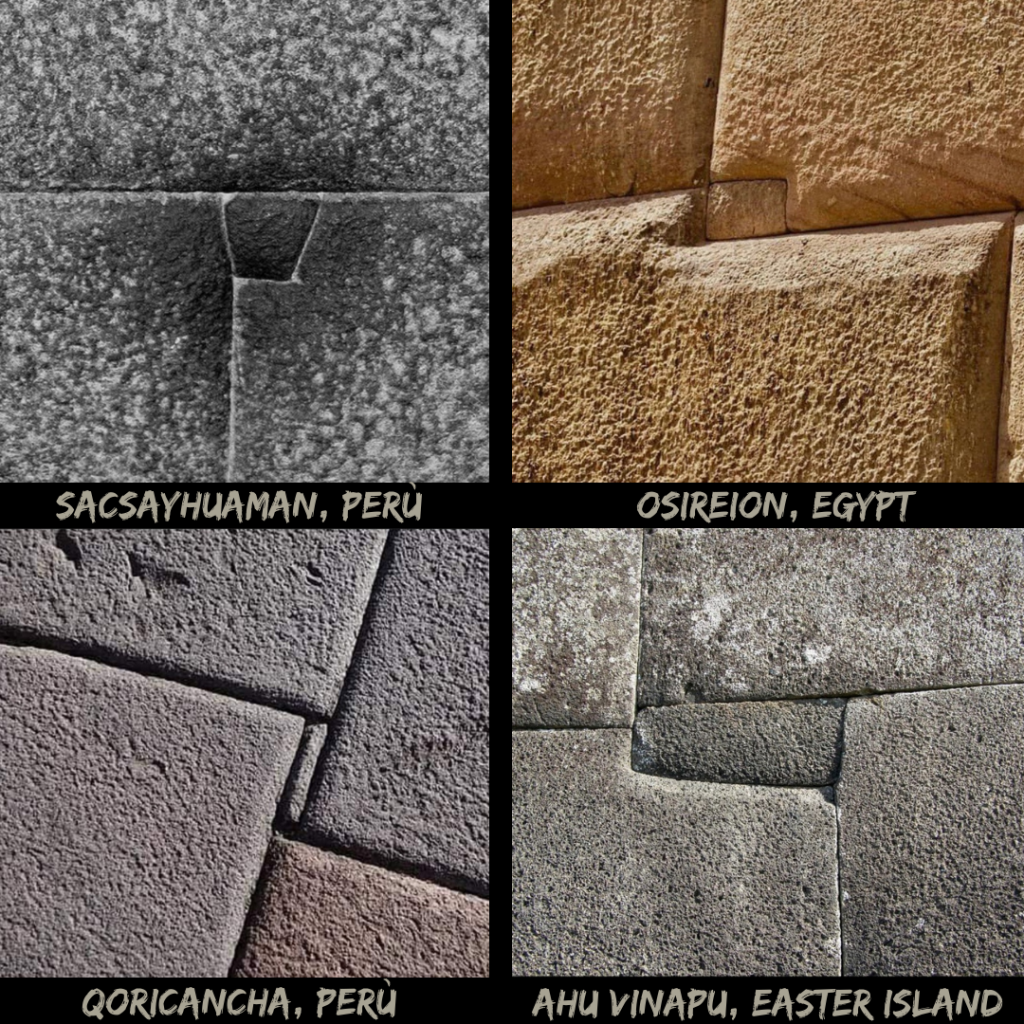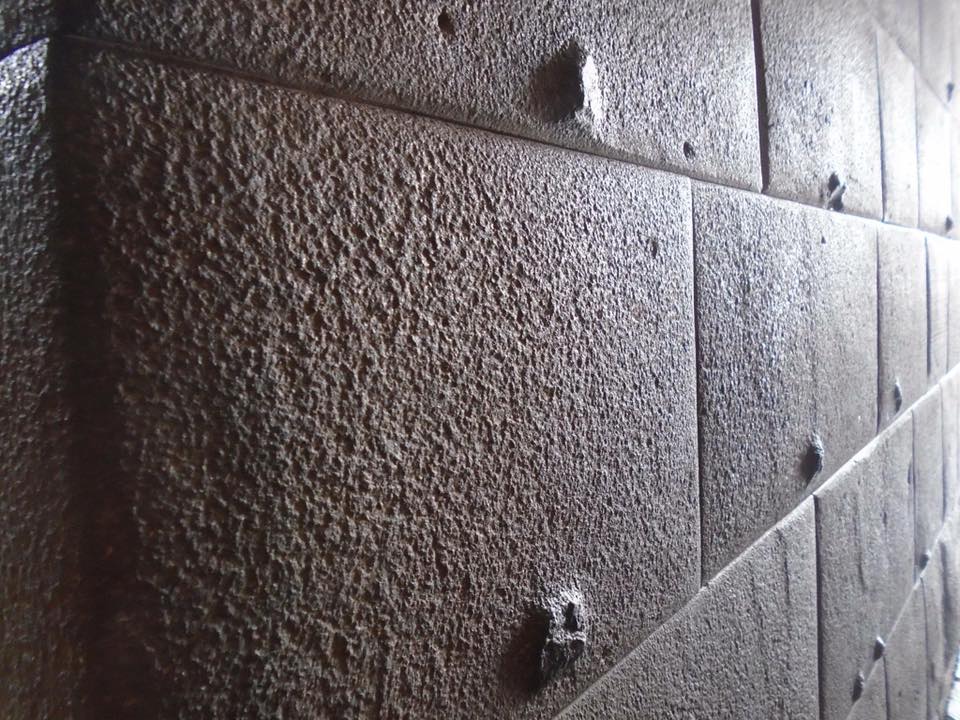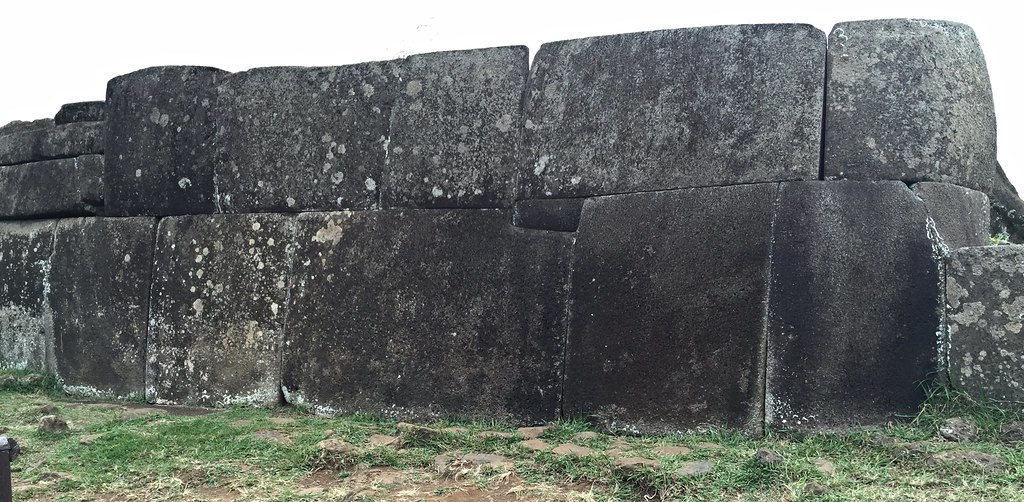The Anti-Seismic Megalithic Walls

Ancient Advanced Cultures: The Secrets of Their Technology
Ancient advanced cultures employed remarkably similar techniques in cutting, crafting, and constructing their monumental structures, raising fascinating questions about their potential shared knowledge or interconnection.
Common Architectural Elements in Ancient Technology
These ancient builders utilized a variety of advanced technologies, including polygonal masonry, precise cuts, drill holes, metal clamps, and scoop marks. Among these, their anti-seismic engineering methods stand out as particularly sophisticated and easily recognizable.
The Ingenious Anti-Seismic Engineering of Ancient Cultures
At first glance, the seemingly random placement of stones might appear to be a casual arrangement or a simple method to fill gaps between larger stones. However, from an architectural perspective, these smaller stones serve a crucial purpose. They create stress-relief points within the structure, granting the walls anti-seismic properties. During an earthquake, the vibrations are absorbed and dissipated at these relief points, preventing damage to the overall structure.
A Technique Known Across Ancient Advanced Cultures
This advanced anti-seismic technology was not confined to a single region. From South America to Egypt, ancient advanced cultures incorporated this technique into some of the most impressive megalithic structures ever built.
Notable Megalithic Structures Featuring Ancient Technology
This sophisticated construction method is found in some of the oldest and most enigmatic buildings, including:
- The Osireion in Egypt: Thought to predate all other ancient Egyptian structures, the Osireion was revered as a sacred site even during the time of Seti I. Its discoverer, renowned archaeologist Flinders Petrie, believed it to be the oldest site in Egypt.
- Qoricancha and Sacsayhuaman in Peru: These sites exhibit a level of craftsmanship and engineering far beyond the classical Inca style, featuring advanced techniques such as stone vitrification, perfect cuttings, and mysterious tool marks.
- The Megalithic Wall at Ahu Vinapu on Easter Island: Another example of this lost engineering prowess, showcasing the same meticulous construction methods.
Lost Knowledge of Ancient Advanced Cultures
Interestingly, these anti-seismic techniques were not used by the Inca or Dynastic Egyptians in their later constructions, suggesting that this advanced technology was lost over time.

Easter Island: Evidence of Ancient Advanced Cultures and Technology
One of the most enigmatic structures showcasing ancient advanced cultures and their technology is the remains of a megalithic wall on Easter Island. This site clearly demonstrates that an advanced culture was capable of constructing impressive megalithic walls, beyond the more famous Moai statues.
Mysteries of the Ancient Megalithic Wall
With no traces of other megalithic buildings on the island and only a few massive blocks remaining from this wall, one must wonder how many millennia have passed to reduce what was likely a massive construction to just a few remnants. This intriguing question highlights the advanced technology and engineering skills of the ancient builders.
Historical Accounts of Ancient Technology
When James Cook explored Easter Island in 1774, he was astounded by the megalithic wall. He documented that this ancient structure was better engineered than any modern British building of his time, further underscoring the sophisticated technology of the ancient culture responsible for its construction.

